Hundreds of fans held their breath and then burst into cheers amid the dramatic and exciting engine noise at the "Mini Car Racing 2025" model car race that took place this morning (May 24) at Cao Thang Technical College. This is the 10th year that the Faculty of Mechanical Engineering has collaborated with the school's Youth Union to organize this competition.
Model cars apply new technology
The competition gathered 27 excellent racing teams that passed the technical testing and preliminary rounds of 70 teams from more than 10 colleges and universities including: University of Technology (Ho Chi Minh City National University), Ho Chi Minh City University of Technical Education, Tra Vinh University, Van Lang University, Nguyen Tat Thanh University, Binh Duong University, Cao Thang Technical College, Ho Chi Minh City Vocational College, Saigon Gia Dinh College and Saigon Polytechnic College.
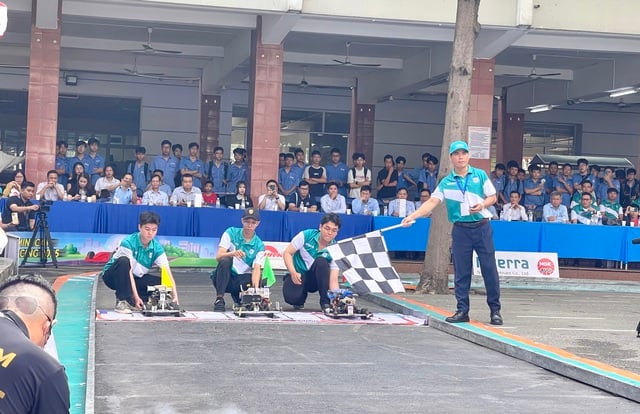
One, two, three... go!
PHOTO: MY QUYEN
Mr. Nguyen Ngoc Thanh, Head of the Organizing Committee of the competition, informed: "Mini Car Racing is a competition of model cars designed and manufactured by students themselves (minimum 50%); with maximum dimensions (length x width x height) of 80 x 50 x 50 cm; using a 2-stroke gasoline engine with a capacity of 22 - 33cm 3 ; with the same structure and operating principle as a real car".
The model cars are remotely controlled by phone via wifi connection, automatically controlled - connected. In particular, with the aim of guiding the teams to apply modern science and technology, new HYBRID technology (a combination of gasoline engine and electric motor on model cars) to save fuel, reduce environmental pollution, the organizers set the theme "E - POWER" for the creative award and also the theme for this year's competition.
Mr. Nguyen Ngoc Thanh commented: “In the context of climate change and the global trend of smart transportation, bringing green-saving-sustainable technology into technicaleducation is the top choice. Mini Car Racing is not only a healthy and attractive playground for students but also arouses the spirit of creativity and responsibility to protect the living environment. In the future, this competition aims to be a gathering place for self-driving programmed cars. This is also the research and manufacturing trend of car manufacturers around the world”.
The final round of "Mini Car Racing 2025" will have 13 matches. The teams will go through the quarter-finals and semi-finals to select the 3 best teams to compete in the final.
Thrilling on the track
Right in the semi-finals, the whole schoolyard was breathless with the tiny cars but emitting exciting engine noises right from the starting line. However, due to the small width of the track and the sharp turns, many "warriors" crashed into the side of the track, causing the cars to... have circuit damage and have to stop. Some cars also fell over when making a sharp turn and had their engines shut down, forcing the racing team to restart. Some cars lost their wifi connection or their chains slipped while climbing the slope...
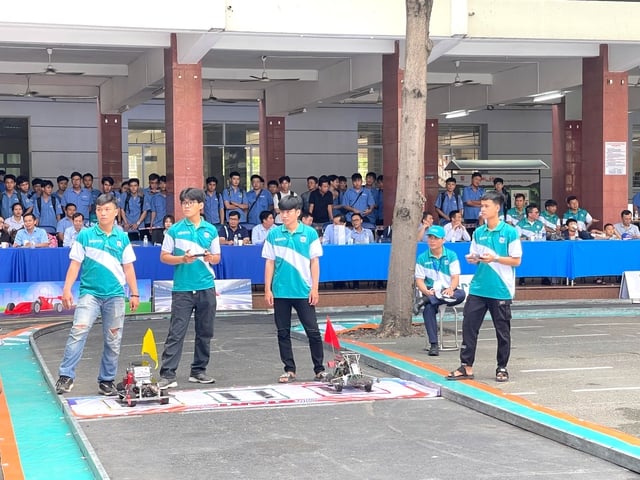
The teams are preparing to race.
PHOTO: MY QUYEN
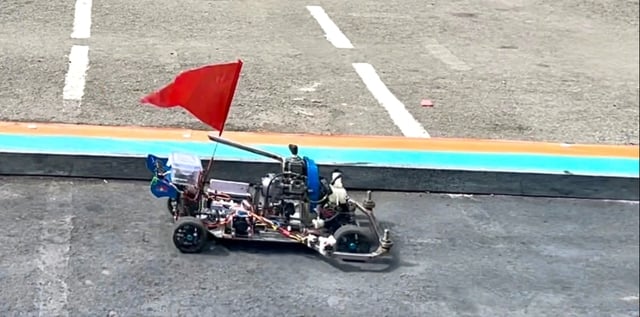
A "warrior" is breaking out
PHOTO: MY QUYEN
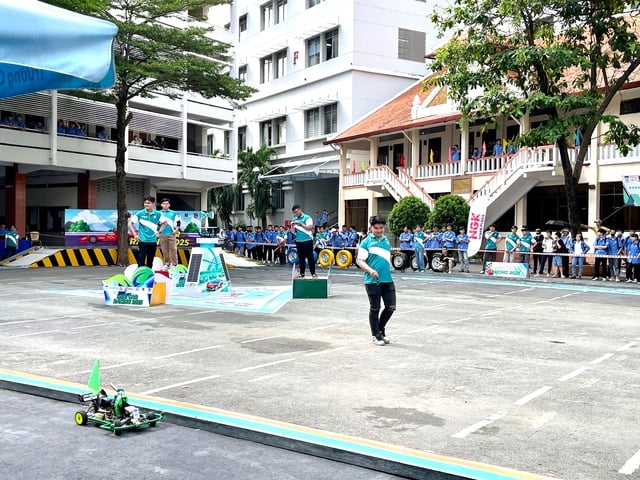
Team members stand inside the track to control the race.
PHOTO: MY QUYEN

A "warrior" has a problem that forces members to work hard to fix it right on the track
PHOTO: MY QUYEN
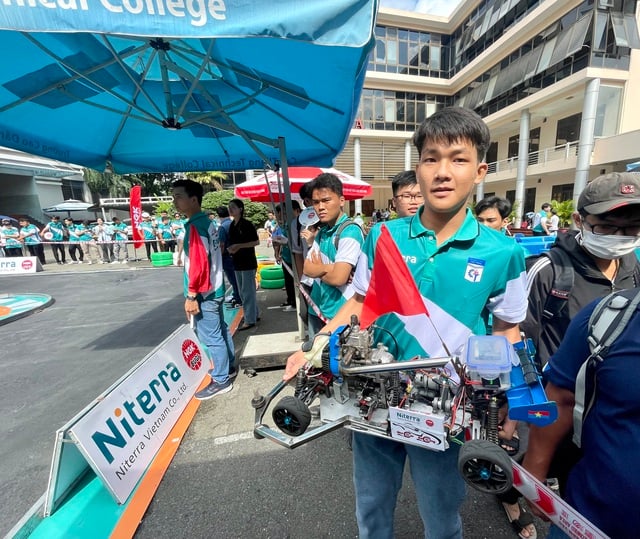
A member from Ho Chi Minh City University of Technology is preparing to enter the race.
PHOTO: MY QUYEN
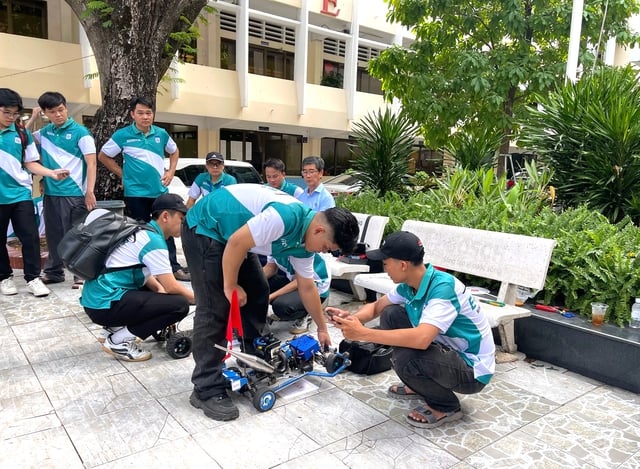
Teams are checking equipment before the competition.
PHOTO: MY QUYEN
However, some teams managed to reconnect with the car, restart and break away, completing two laps. Some teams had to stop because the device could not continue.
Pham Van Thuong, a third-year student majoring in automotive engineering at Cao Thang Technical College, said his team spent nearly two months designing and manufacturing the model for the competition. "We bought the engine to make it, bought raw materials to process it manually. Next was the design of the control circuit, coding, programming, connecting...", Thuong said.
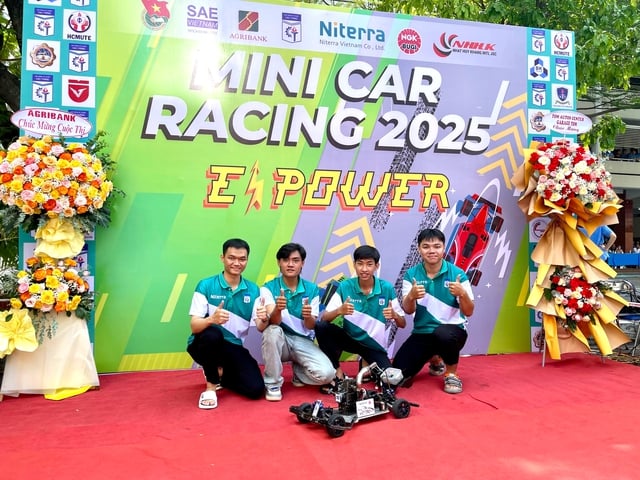
Pham Van Thuong's BIG HEAD team won the championship
PHOTO: MY QUYEN
According to Thuong, although the teams have checked many times before the competition, during the competition, there may still be some problems such as slipping chains when going up steep slopes, broken drive shafts, bent bumpers, lost connections... causing the equipment to stop. Depending on the handling ability of each team, the vehicle can continue or not.
Vo Minh Thang, a student majoring in automotive engineering at the University of Technology (Ho Chi Minh City National University), also said that most equipment can malfunction on the racetrack even though it was tested and operated very well before.
"That's what makes the competition so exciting and suspenseful. There are teams that initially thought they had problems and couldn't continue competing, but at the last minute they made a spectacular breakthrough and won the group," Thang shared.
Homeowners reap huge rewards
The championship went to team BIG HEAD (Cao Thang Technical College), receiving a prize of 20 million VND.
Second prize went to FL SWAT team (Cao Thang Technical College) with a prize of 7 million VND.
The media award went to team ABBADDON (Cao Thang Technical College), worth 15 million VND.
The team with the product with the most creative and unique technical solution in terms of features, aesthetics and economy, similar to the actual structure belongs to FAST MAN team (Cao Thang Technical College), receiving a prize of 7 million VND. This prize is decided by the Ho Chi Minh City Automobile and Power Equipment Association. The product will be selected by Cao Thang Technical College as a model for teaching.
The teams from universities such as Ho Chi Minh City University of Technology, Ho Chi Minh City Technical Education, Tra Vinh, Van Lang, Nguyen Tat Thanh, Saigon University of Technology... received consolation prizes.
Source: https://thanhnien.vn/nghet-tho-voi-cuoc-dua-o-to-mo-hinh-nhieu-chien-binh-but-pha-phut-chot-185250524101731121.htm



![[Photo] Ho Chi Minh City holds funeral for former President Tran Duc Luong](https://vphoto.vietnam.vn/thumb/1200x675/vietnam/resource/IMAGE/2025/5/24/9c1858ebd3d04170b6cef2e6bcb2019e)


![[Photo] Party and State leaders visit former President Tran Duc Luong](https://vphoto.vietnam.vn/thumb/1200x675/vietnam/resource/IMAGE/2025/5/24/960db9b19102400e8df68d5a6caadcf6)




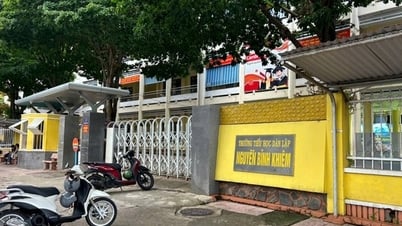


























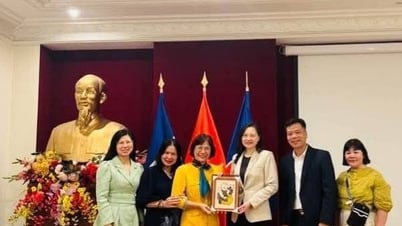

























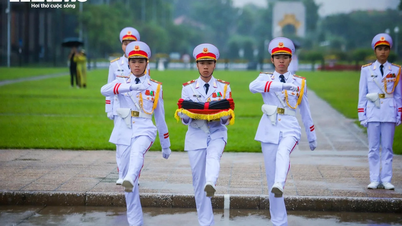































Comment (0)